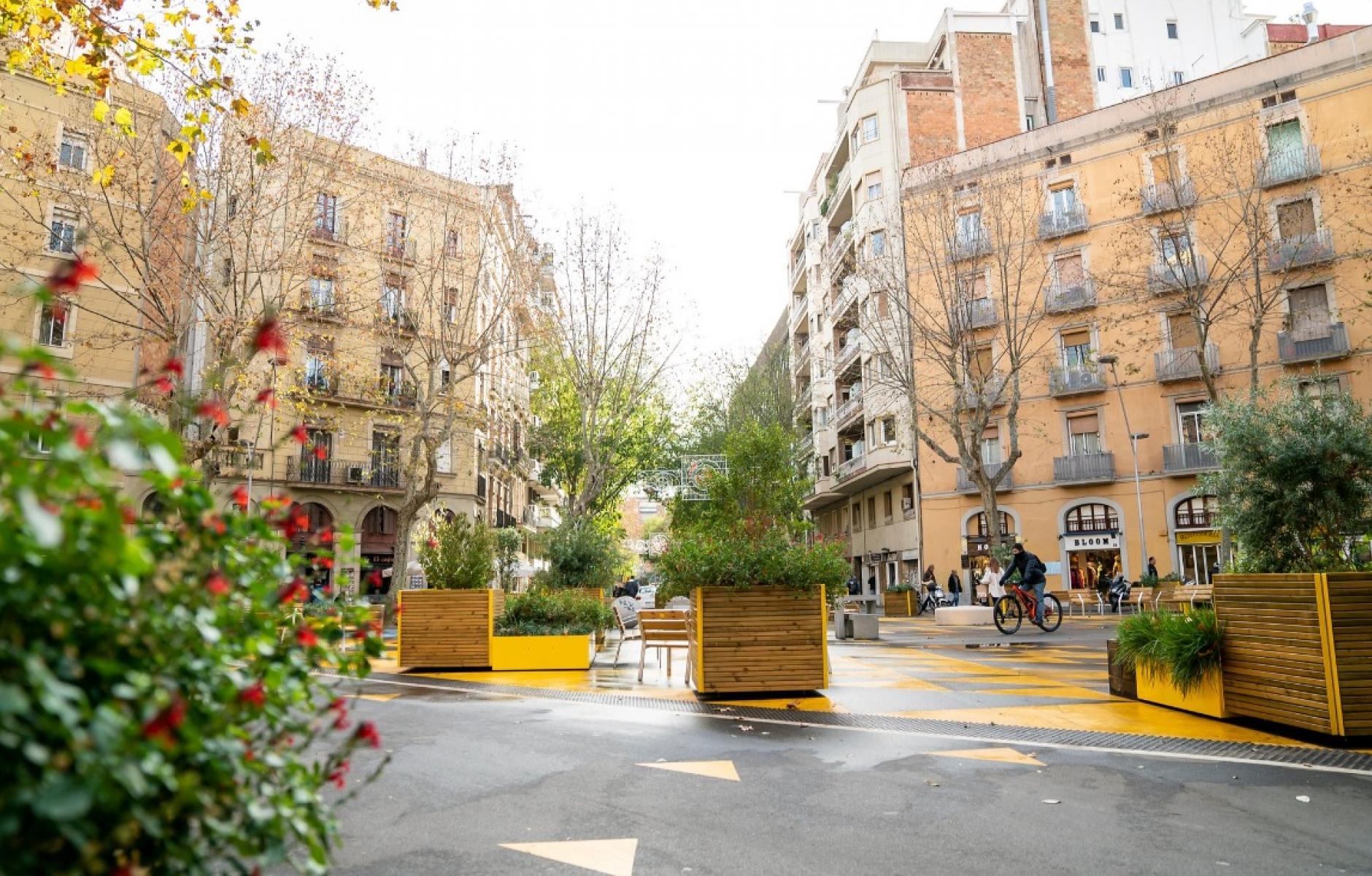
Are superblocks the future of urban living?
The recent referendum in Paris, which approved tripling parking fees for SUVs entering the city, is the latest in a string of actions across the European continent aimed at ushering in a new era of post-car urban living. But as automobiles increasingly leave the historic streets of cities like Copenhagen, Freiburg, and Paris, what comes next?
Enter Barcelona, the cosmopolitan capital city of Spain’s Catalonia region and home of the superblock, an innovative approach to urban planning.
The Barcelona superblock idea is simple: a three-block-by-three-block grid, separated by outer streets for vehicle traffic, with the interior reserved for pedestrians and public infrastructure like cafes, markets, and parks. In Barcelona, some cars can still traverse the interior streets of the superblock, however they are limited to a speed of about 5-10 miles per hour and required to yield to pedestrians in order to facilitate a safer intermingling between man and vehicle.
Superblocks as an urban planning concept first emerged in Barcelona through the 1932 Plan Macià, a city planning design initiative envisioned by architects Josep Lluís Sert and Le Corbusier. Plan Macià proposed demolition of existing buildings and radically different architecture and urban form, and was never built. In 1958, Oriol Bohigas, the renowned architect and mastermind behind the 1992 Olympic Games, envisioned a different kind of superblock by combining nine blocks of the old city to mitigate growth and mobility needs.
Finally, in 1993, the Urban Ecology Agency of Barcelona introduced its first superblock in the El Born neighborhood, a historic section of the city near the Basilica de Santa Maria del Mar. In the last five years alone, Barcelona has built six new superblocks, and aims to establish a total of 21 by 2030. Since the introduction of superblocks in Barcelona, the city has experienced a number of great benefits, including an increase in cycling and walking, and a reduction of noise and air pollution.
Researchers and urban planners from across the globe have been fascinated by Barcelona’s experiment, and a number of reports have found fantastic results. A 2021 study conducted by the city’s Public Health Agency, in collaboration with the Partnership for Healthy Cities, found that since the introduction of superblocks, the city has seen a 25 percent decrease in the levels of nitrogen dioxide, a toxic air pollutant. This reduction, along with other benefits including greater walkability, improved mobility for those with disabilities, and less noise pollution, led the study to conclude that if superblocks were implemented at a larger scale an estimated 700 annual deaths could be prevented. Another recent study, conducted by the Barcelona Institute for Global Health, found that superblocks have been pivotal in addressing the urban heat island effect. This phenomenon occurs as cities envelop natural areas and replace ground cover with denser, man-made substances like concrete and pavement. These surfaces absorb and retain heat, thus raising temperatures in urban areas and in turn increasing energy costs, pollution, and related illnesses. The Barcelona Institute for Global Health found that superblocks work to mitigate and reduce the effects of urban heat islands, as the interior pedestrian areas are often repurposed from roads to parks and natural spaces, which have a cooling effect on the city as a whole.
Not only do these pedestrian-friendly communities present a number of environmental benefits, they also offer a potential solution to the growing social isolation epidemic. The COVID-19 pandemic has shown us the damaging effects of isolation, which can be further exacerbated in larger communities dominated by automobiles and separated by large highways. In contrast, recent surveys of residents in Barcelona’s superblocks have reported greater social interaction between residents, as well as an increase in their overall well-being.
Proponents of New Urbanism, a school of urban design theory which promotes walkable neighborhoods and overall healthier communities, have begun to express interest in implementing the superblock in cities across the globe. In nearby Stuttgart, Germany, local government officials voted to create three superblocks based on the Barcelona design. This comes after the city piloted pop-up superblocks in 2021 during its Mobility Week festivities.
Across the Atlantic, a number of major U.S. cities have also announced their interest in superblocks. Last summer, the Los Angeles City Council passed a measure to identify a location for its first Park Block, a pedestrian-friendly urban design initiative modeled after the superblocks in Barcelona. In the Midwest, the transit advocacy organization Better Streets Chicago announced its Community Blocks Campaign, which aims to reduce traffic in residential neighborhoods across the city. Kyle Lucas, cofounder of Better Streets, praised Barcelona’s superblocks as a model for their current campaign, telling the audience at their annual meeting, “They [Barcelona] have really kind of modeled what the future of neighborhood streets can look like.”
This renewed interest in alternative methods of urban planning brings to the forefront a critical conversation on the future of urban living. As urban centers across the globe become increasingly committed to the reduction of automobiles within city limits, the question remains, what’s next?
The answer, perhaps, lies in the new pedestrian-friendly streets of Barcelona’s superblocks.




